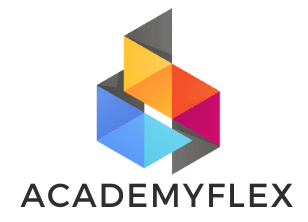Mortgage options for homebuyers
Ever wondered if there’s a mortgage that perfectly fits your budget, credit situation, or life goals? With so many home mortgage programs available, choosing the right option can feel overwhelming. Whether you’re a first-time buyer, a military veteran, or someone ready to renovate, this guide simplifies the maze of mortgage options for homebuyers.
Today’s market offers loans like FHA programs requiring just 3.5% down (average FICO 687 in 2024) or zero-down VA loans for eligible military borrowers (average FICO 721). Even USDA loans let you buy rural homes with no down payment, though income limits apply. Conventional loans start at 3% down, while renovation-focused FHA 203(k) combines buying and remodeling. With so many paths, how do you pick?
Key Takeaways
- Government-backed loans like FHA, VA, and USDA offer low or zero-down options tailored to specific groups.
- Conventional loans cost less in fees but may need higher credit scores (minimum 620) and PMi if down payments are under 20%.
- Special programs like HomeReady or Home Possible target low-income buyers, while jumbo loans suit high-value homes requiring scores of 700+.
- Fixed-rate mortgages lock in stability, while ARMs start low but risk payment hikes later.
- Pre-approval and understanding terms like loan-to-value ratios are critical steps to avoid common pitfalls.
Understanding the Mortgage Landscape in 2023
In 2023, the mortgage market is changing fast. Homebuyers need to understand trends like rising interest rates. They also need to know about new lender practices to find the best mortgage rates and mortgage options for homebuyers. Let’s explore what this means for you.
Current Mortgage Market Trends
Fixed-rate mortgages are popular because they offer stability. Data shows 30-year fixed rates are over 7% until the end of 2023. Adjustable-rate mortgages are less popular because of uncertain rates.
Lenders are using new tools: digital apps and AI to make things faster. These tools help with applications and approvals.
How Economic Factors Affect Your Options
- Rising inflation and Fed rate hikes affect mortgage prices.
- Low housing inventory makes buyers compete for homes. They look for mortgage options for homebuyers with flexible terms.
- Suburban and rural areas are getting more attention. Lenders are creating products for these markets.
What Today’s Buyers Need to Know
Homebuyers face affordability challenges. Prices are high, and lenders want strong credit (700+ scores) and stable income. Look into FHA loans for lower down payments or VA/USDA options for certain areas.
Keep an eye on best mortgage rates by comparing offers from banks, credit unions, and online platforms. Also, ask lenders about fees upfront because of new regulations.
Mortgage Options for Homebuyers: Exploring the Fundamentals
Choosing the right mortgage options for homebuyers starts with understanding core concepts. Every loan includes principal (the loan amount), interest (lender fees), and repayment terms (like 30 years). Amortization schedules break down how payments reduce debt over time, with early payments covering more interest.
Interest rates and home mortgage programs vary widely. The Annual Percentage Rate (APR) shows total borrowing costs, including fees. A 30-year fixed-rate mortgage locks in rates, while ARMs adjust periodically. For example, FHA loans let buyers put just 3.5% down but require mortgage insurance. VA loans need no down payment for eligible veterans. USDA loans target rural buyers with low-to-moderate incomes.
- Conventional loans: 3% down, stricter credit checks
- FHA loans: 3.5% down, lower credit score flexibility
- VA loans: No down payment, no mortgage insurance
- Jumbo loans: For high-priced homes, higher credit demands
Closing costs often equal 2-5% of the loan amount. Private mortgage insurance (PMI) is required for down payments below 20%, adding to monthly bills. First-time buyers can explore state programs offering down payment help or tax breaks. For instance, Fannie Mae’s HomePath program offers closing cost assistance.
Understanding these basics arms buyers to compare loans and mortgage options for homebuyers effectively. Whether exploring conventional loans or government-backed programs, knowing terms like APR and amortization ensures informed decisions. Next, we’ll dig into fixed vs. adjustable rates.
Fixed-Rate vs. Adjustable-Rate Mortgages: Making the Right Choice
When picking between fixed-rate and adjustable-rate mortgages, think about your financial goals. Fixed-rate mortgages keep the samebest mortgage ratesfor the whole loan term. This means your payments stay the same. Many first-time buyers like 30-year terms because they make budgeting easier.
A 30-year fixed at 7.10% means steady costs. But, a 5/1 ARM starts at 6.08% and could go up to 11.08% later.
The Security of Fixed-Rate Mortgages
Fixed-rate loans give you predictable payments for 15, 20, or 30 years. These mortgage options for homebuyers protect you from rate changes. For example, a 30-year FHA loan with 3% down keeps your interest steady, even if rates go up.
When Adjustable-Rate Mortgages Make Sense
- ARMs start with lower rates but change every 5, 7, or 10 years.
- Rates are based on indexes like SOFR plus a fixed margin.
- Caps limit how much rates can increase—like the 5/1 ARM’s 2% annual cap.
These are good for those planning to sell before the rate changes. If rates drop, ARMs can save money. But, they also come with uncertainty for the long term.
Hybrid ARM Options for Flexible Homebuyers
Hybrid ARMs mix fixed and adjustable terms. A 5/1 ARM keeps rates fixed for five years before adjusting every year. Buyers moving in 5-7 years might save upfront and avoid long-term risks. Look at terms like 7/1 or 10/1 to fit your plans.
Conventional Loan Programs and Their Requirements
Conventional loans are key for mortgage options for homebuyers. They are backed by Fannie Mae and Freddie Mac. These home mortgage programs need a credit score of 620. Down payments start at 3% for Fannie Mae’s HomeReady and Freddie Mac’s Home Possible.
Borrowers can have debt-to-income ratios up to 45–50%. There are flexible terms for both first-time and repeat buyers.
- Primary residence use (single-family homes or up to four-unit properties)
- PMI if down payment
- Income and asset documentation (tax returns, pay stubs)
| Program | Down Payment | Credit Score | Eligibility | Features |
|---|---|---|---|---|
| Conventional 97 | 3% down | 620+ | All borrowers | PMI until 20% equity |
| HomeReady | 3% down | 620+ | Low-to-moderate income buyers | Down payment assistance options |
| Conventional Plus | 3% down | 620+ | Income ≤80% area median | No PMI if 20% down; flexible underwriting |
| SONYMA Achieving the Dream | 3% down | 620+ | First-time buyers | 120-day rate locks for existing homes |
State-backed programs like HFA Preferred and FHA Plus work with conventional loans. They offer down payment grants. Borrowers must check if their property meets structural standards.
They also need to run addresses through Fannie Mae’s eligibility tool for multi-unit properties. These mortgage options for homebuyers offer flexibility while keeping lender standards.
Government-Backed Home Loans: FHA, VA, and USDA Options
Government-backed home loans help buyers who struggle with regular mortgages. FHA, VA, and USDA offer special solutions. They include first-time homebuyer loans with easier terms and down payments. These programs make buying a home easier.
FHA Loans: Lower Down Payment Barriers
FHA loans need only 3.5% down and accept gifts or grants. You can get a loan with a credit score as low as 580. But, if your score is lower, you’ll need to put down 10%.
These loans are great for first-time homebuyers because they’re flexible. All FHA loans have mortgage insurance. But, you can drop it after 11 years if you have 10% equity.
VA Loans: Benefits for Military Service Members
- No down payment needed for those who qualify
- No private mortgage insurance (PMI)
- Capped closing costs to help borrowers
USDA Loans: Rural Housing Opportunities
USDA loans are for homes in rural areas. They don’t require a down payment, allowing for 100% financing. You must meet income limits based on your household size and where you live.
Mortgage insurance costs are often lower than with FHA or regular loans.
Comparing Eligibility Requirements
- FHA: Must be your primary home, credit score 580 (3.5% down), or 500 with 10% down
- VA: For service members with 2 years active duty (varies by branch) or eligible survivors
- USDA: Income must be ≤80% of area median income, property must be in USDA-eligible rural zones
First-Time Homebuyer Loans and Assistance Programs
Buying a home doesn’t have to be expensive. First-time homebuyer loans and low down payment mortgages help you start with less money. These programs offer education, grants, and flexible payments to make it easier.
State Programs Lower Entry Barriers
States like California and Texas have special programs for first-time buyers. They offer grants, forgivable loans, or lower down payments. For instance:
- First Step Program: 6% down payment help with a 30-year fixed rate
- Wells Fargo Dream Plan Home®: 3% down payment loans plus up to $5,000 for closing costs
Down Payment Solutions
There are low down payment mortgages from lenders and state agencies. The Next Home Program helps with 2.5-3.5% down payment, starting at a 640 credit score. Some states even match your savings for a home.
Tax Breaks for New Owners
Tax benefits include mortgage interest deductions and Mortgage Credit Certificates (MCCs). These lower your federal taxes. Many programs also don’t require repayment if you stay in the home for 5+ years.
Always check with local housing finance agencies and HUD-approved counselors. Programs like Next Step refinance or First Place loans from IHCDA are available. Start looking at your state’s options today.
Jumbo Mortgages for High-Value Properties
For those looking at homes worth more than usual, jumbo mortgages are a good choice. These loans go beyond the limits set by Fannie Mae and Freddie Mac. In 2023, these limits were $766,550, but in places like Hawaii and Alaska, they hit $1.15 million.
- Credit score: Lenders often require 700–720+ FICO scores
- Down payments: 10–20% or more of the home’s value
- Cash reserves: 6–12 months of mortgage payments needed
Jumbo loans are different from home mortgage programs like FHA or conventional loans. They have stricter rules. Borrowers need to show they have stable income and assets. For top applicants, the interest rates might be as good as or better than conventional loans.
These loans are for primary homes, vacation spots, and investments. Portfolio lending, where banks keep the loans, can offer more flexibility. Even though jumbo loans don’t require PMI, they focus on financial stability. Buyers in pricey areas should shop around to find the best deal. This ensures they qualify for these mortgage options for homebuyers.
The Mortgage Pre-Approval Process: Setting Yourself Up for Success
Before you start looking for homes, getting a mortgage pre-approval helps set your budget. It’s more than just an estimate. It checks your income, assets, and credit score. This makes it crucial for serious buyers.
It helps you pick the best
Lenders need proof that you can afford a mortgage:
- Pay stubs from the last 30 days
- W-2 forms from the past two years
- Bank statements from the last two months
- Identification like a driver’s license or SSN
- Records of your debts, like loans and credit cards
| Component | Description |
|---|---|
| Loan Amount | The most you can borrow based on your income and debts |
| Interest Rate | The predicted rate based on today’s market |
| Expiration Date | Usually 60-90 days, but it can vary |
| Conditions | Requirements like a minimum credit score or debt limits |
| Lender | Validity Period |
|---|---|
| IMCU | 120 days |
| Standard Lenders | 60-90 days |
| Alternative Options | 30-180 days |
A pre-approval letter isn’t a final yes on a loan. It shows how much you can spend. Keep your finances steady during this time to avoid delays. Check the terms often and renew if you need to. A strong pre-approval makes you more competitive in any market.
Finding the Best Mortgage Rates: Strategies and Tips
Getting the best mortgage rates starts with knowing what lenders look for. A high credit score, 740+, often gets you the lowest rates. Improve your score by paying off debts and fixing any credit report errors.
A 20% down payment reduces the lender’s risk. This can lower your rates and avoid PMI costs.

| Credit Score Range | Typical Rate Impact |
|---|---|
| 720-850 | Lowest rates available |
| 690-719 | Competitive but slightly higher rates |
| 630-689 | Higer rates and stricter terms |
| Below 630 | Limited options; higher interest likely |
Pro Tip: Compare rates from at least three lenders. Look at APRs, fees, and closing costs, not just the interest rate. Use the CFPB’s Rate Comparison Chart to make comparisons easier.
- Keep your debt-to-income ratio below 36% for better terms.
- Pay discount points (1% of the loan amount) to lower rates by 0.25% each.
- Apply when rates are low. Check Freddie Mac’s weekly rate surveys.
State programs in California, Texas, Florida, and Illinois offer down payment help. This can improve your mortgage options. Always ask about teacher, veteran, or first-time buyer incentives. Comparing 5+ lenders helps you find the best rates for your financial situation.
Low Down Payment Mortgage Options for Budget-Conscious Buyers
Buying a home doesn’t need a big upfront payment. Look into low down payment mortgages and first-time homebuyer loans. These options make it easier for those with little savings to buy a home without losing financial stability.
Conventional 97 loans only need 3% down, backed by Fannie Mae and Freddie Mac. You must meet income limits and finish a homeownership course for some. FHA loans require 3.5% down but have upfront mortgage insurance. Veterans and military families can get first-time homebuyer loans like VA loans, needing no down payment and no mortgage insurance.
3% Down Conventional Options
- Conventional 97: 3% down, 620+ FICO score, income limits apply.
- HomeReady® (Fannie Mae):) 3% down, flexible credit scoring, education required for lower scores.
- Home Possible® (Freddie Mac):) 3% down, income limits, reduced mortgage insurance costs.
FHA’s 3.5% Down Payment Program
FHA loans need a 3.5% down payment for first-time homebuyer loans. You pay 1.75% upfront mortgage insurance plus monthly premiums. A 580 middle FICO score is needed for 3.5% down; lower scores may require higher down payments.
Zero Down Payment Possibilities
VA loans offer 0% down for eligible military members. USDA loans cover rural/suburban homes with 0% down but limit income and location. Both avoid mortgage insurance premiums.
| Loan Type | Down Payment | Eligibility | Key Feature |
|---|---|---|---|
| Conventional 97 | 3% | 620+ credit score | Flexible income limits |
| FHA | 3.5% | First-time buyers | Lower credit score options |
| VA | 0% | Veterans/military | No mortgage insurance |
| USDA | 0% | Rural areas, income limits | No monthly MI |
Gift funds from family can help with down payments. Programs like HomePath offer closing cost help. Compare options carefully to find the best balance between down payment costs and long-term savings.
Refinancing Options: When and Why to Consider Them
Homebuyers should look into refinancing options for long-term plans. These options help adjust terms, cut costs, or tap into equity. Knowing when to refinance is key to making smart choices for your mortgage options for homebuyers journey.
Rate-and-Term Refinancing Explained
Start by lowering monthly payments or shortening loan terms. For example, a $100,000 loan at 7% costs $665 a month. But, at 5%, it drops to $536. Think about the savings versus closing costs to see when it’s worth it. You’ll need a credit score of 620+ for most refinancing options.
Cash-Out Refinancing Possibilities
Use your home’s value to borrow money for renovations or to pay off debt. But, expect higher interest rates. You can deduct mortgage interest if you itemize on taxes. Always look at loan-to-value ratios and repayment risks.
Streamline Refinance Programs
Homeowners with FHA, VA, or USDA loans can use streamlined options. These require little paperwork and no appraisals. The terms are similar to your original loan, making it a quick and cost-effective way to lower rates or change terms.
| Type | Key Features | Best Use |
|---|---|---|
| Rate-and-Term | Lower rate, fixed terms | Monthly savings or faster payoff |
| Cash-Out | Access equity, higher loan balance | Large expenses, debt consolidation |
| Streamline | Easy process for govt-backed loans | Quick rate adjustments with minimal paperwork |
Before refinancing, compare offers from different lenders. Consider long-term savings and tax benefits. A financial advisor can help ensure your choice fits your financial goals.
Mortgage Lenders Comparison: Banks, Credit Unions, and Online Lenders
Finding the right lender is crucial for homebuyers. Banks, credit unions, and online lenders each have their own benefits. For instance, national banks like Bank of America offer in-person service and grants. Credit unions, like Navy Federal, might have lower fees but require you to be a member. Online lenders, such as Rocket Mortgage, make applying easy but may not offer personal service.
When comparing lenders, look at rates, fees, and services. Think about what you need most. Do you want low down payments, tech ease, or personal help? Here’s how to decide:
- Loan types available (conventional, FHA, VA)
- Origination fees and APRs
- Customer service options (phone, in-person, online)
- Membership or eligibility requirements
| Lender Type | Pros | Cons | Best For |
|---|---|---|---|
| Banks | Established networks, grants, and branch access | Higher fees, stricter credit checks | Buyers needing grants or local offices |
| Credit Unions | Lower rates, member benefits, loan retention for better service | Membership requirements, limited loan options | Those prioritizing affordability and community support |
| Online Lenders | Fast approvals, digital tools, competitive rates | Less personal interaction | Buyers preferring tech-driven processes |
Look up lender reviews on the BBB website and read what other borrowers say. Credit unions might be 0.25% cheaper than banks, and online lenders like Better Mortgage are available 24/7. Always ask for detailed fee schedules and loan terms. Compare at least three lenders to find the best one for your budget and needs.
Common Mortgage Application Mistakes to Avoid
Buying a home requires careful planning. Even small errors can stop your application. Stay away from these mistakes to get the best mortgage deals and make the process easier.
Credit Score Missteps
Opening new credit accounts or closing old ones can lower your score. Keep your accounts open and avoid big purchases until you close. Check your credit reports before applying to find any mistakes.
FHA loans need accurate credit score checks. Fix any issues early to increase your chances of approval.
Debt-to-Income Ratio Problems
Lenders look at your DTI by comparing your debts to your income. Overspending or not reporting all income can affect this ratio. Try to pay down debt before you apply.
FHA loans allow lower down payments (3.5%). But, a high DTI might need more savings or a co-signer.
Employment Verification Issues
Changing jobs or careers during the mortgage process can delay approval. If you’re self-employed, bring tax returns and pay stubs. Unusual deposits in your bank statements can also cause delays—make sure to document all your income.
Start shopping for lenders early to compare mortgage options. Avoid making big financial changes at the last minute. Keep in touch with your lender to ensure a smooth application process.
Conclusion: Selecting the Right Mortgage for Your Homeownership Journey
Choosing the right mortgage means matching your financial goals with the best options. First, check your budget, credit score, and how long you’ll stay in the home. Fixed-rate loans are good for long-term stays, while adjustable-rate loans might be better for shorter periods.
Government-backed loans like FHA, VA, and USDA are great for first-time buyers, military, or those in rural areas. They offer flexible terms.
Work with a real estate agent who knows about your loan type. This helps make your offer strong. For example, FHA loans need a 3.5% down payment, while VA loans offer 100% financing for veterans.
A loan officer can guide you on credit score needs and down payment options. They help you avoid mistakes like high debt ratios.
Look at different mortgage options by comparing terms, rates, and who can get them. First-time buyers should check out down payment help or tax credits. Talking to a counselor or financial advisor can help you see the long-term effects, like PMI costs or rate changes.
Take your time to look at all your options. Your choice affects your financial future, so pick what fits your life and goals. Begin with pre-approval, then learn about closing costs and loan terms. Whether it’s conventional, jumbo, or government loans, making informed choices leads to confident homeownership.
Source Links
- A Guide to First-Time Home Buyer Loans and Programs – NerdWallet – https://www.nerdwallet.com/article/mortgages/programs-help-first-time-homebuyers
- What Are The Major Types of Mortgage Loans? | Bankrate – https://www.bankrate.com/mortgages/types-of-mortgages/
- Understand the different kinds of loans available | Consumer Financial Protection Bureau – https://www.consumerfinance.gov/owning-a-home/explore/understand-the-different-kinds-of-loans-available/
- A Comprehensive Look Back at the Mortgage Landscape 2023 – BeSmartee – https://www.besmartee.com/blog/lookback-mortgage-landscape-2023/
- Navigating the 2023 Mortgage Landscape: Strategic Insights for Lenders – BeSmartee – https://www.besmartee.com/blog/mortgage-landscape-takeaways-2023/
- Introduction to Mortgages: Essential Information for Homebuyers – https://communitybank.net/introduction-to-mortgages-essential-information-for-homebuyers/
- First-Time Homebuyer Loans: Special Programs and How to Qualify – https://www.investopedia.com/articles/mortgages-real-estate/08/homebuyer-financing-option.asp
- Fixed vs. Adjustable-Rate Mortgages: What’s the Difference? | Bankrate – https://www.bankrate.com/mortgages/arm-vs-fixed-rate/
- Fixed vs. Adjustable-Rate Mortgage: What’s the Difference? – https://www.investopedia.com/mortgage/mortgage-rates/fixed-versus-adjustable-rate/
- SONYMA Programs – https://hcr.ny.gov/sonyma-programs
- First-Time Homebuyer Loans And Programs | Bankrate – https://www.bankrate.com/mortgages/first-time-homebuyer-loans-and-programs/
- Conventional Loan Requirements 2025 | First-Time Home Buyer – https://themortgagereports.com/95024/conventional-loan-requirements
- First Time Home Buyer Loan Options – https://www.fha.com/fha_article?id=2262
- Understanding Government-Backed Home Loans: FHA, VA, and USDA Loans – Community First Bank | HFG Trust – https://cfbhfg.com/understanding-government-backed-home-loans-fha-va-and-usda-loans/
- Homeownership Programs – https://www.in.gov/ihcda/homebuyers/programs/
- First-Time Home Buyer Loans and Programs – https://www.wellsfargo.com/mortgage/buying-a-house/first-time-home-buyer/
- Understanding Jumbo Loans for High-Value Homes – https://www.cthmortgage.com/blog-posts/understanding-jumbo-loans-for-high-value-homes
- Jumbo Loans for Larger Mortgage Amounts – https://www.bankofamerica.com/mortgage/jumbo-loans/
- Mortgage Pre-Qualification vs. Pre-Approval – Understanding the Difference – https://www.bankofamerica.com/mortgage/learn/mortgage-prequalification/
- Mortgage Pre-Approval – https://www.imcu.com/sub-pillar-article/mortgage-pre-approval
- How To Get The Best Mortgage Rate | Bankrate – https://www.bankrate.com/mortgages/how-to-get-the-best-mortgage-rate/
- How to Get the Best Mortgage Rate – NerdWallet – https://www.nerdwallet.com/article/mortgages/how-to-get-the-best-mortgage-rate
- 6 Ways to Determine the Best Mortgage Loan for You – NerdWallet – https://www.nerdwallet.com/article/mortgages/how-to-choose-the-best-mortgage
- How To Buy a House With No Money Down | $0 Down Loans – https://themortgagereports.com/11306/buy-a-home-with-a-low-downpayment-or-no-downpayment-at-all
- 4 Low Down Payment Mortgage Options – https://www.mrcooper.com/blog/4-low-down-payment-mortgage-options/
- Understanding your refinance options – https://myhome.freddiemac.com/refinancing/options-for-refinancing
- When to Refinance Your Mortgage – https://www.investopedia.com/mortgage/refinance/when-and-when-not-to-refinance-mortgage/
- How to Compare Mortgage Lenders: Key Differences – https://www.wellsfargo.com/mortgage/learn/compare-mortgage-lenders/
- Credit Union Vs. Bank Mortgage: How to Choose | Bankrate – https://www.bankrate.com/mortgages/get-mortgage-from-credit-union/
- 16 First-Time Homebuyer Mistakes To Avoid | Bankrate – https://www.bankrate.com/mortgages/first-time-homebuyer-mistakes/
- The Do’s & Don’ts of Mortgage Applications: Avoid These Common Mistakes – https://www.presidentialbankmortgage.com/post/the-do-s-don-ts-of-mortgage-applications-avoid-these-common-mistakes
- 6 steps to choosing the right mortgage lender – https://finance.yahoo.com/personal-finance/mortgages/article/how-to-choose-a-mortgage-lender-160322441.html
- A Comprehensive Guide to Mortgage Financing: Choosing the Right Loan for Your Financial Situation – https://libtitle.com/a-comprehensive-guide-to-mortgage-financing-choosing-the-right-loan-for-your-financial-situation/
- Mortgage 101: Start your home buying journey – https://blog.umb.com/personal-banking-home-buying-mortgage-101/








